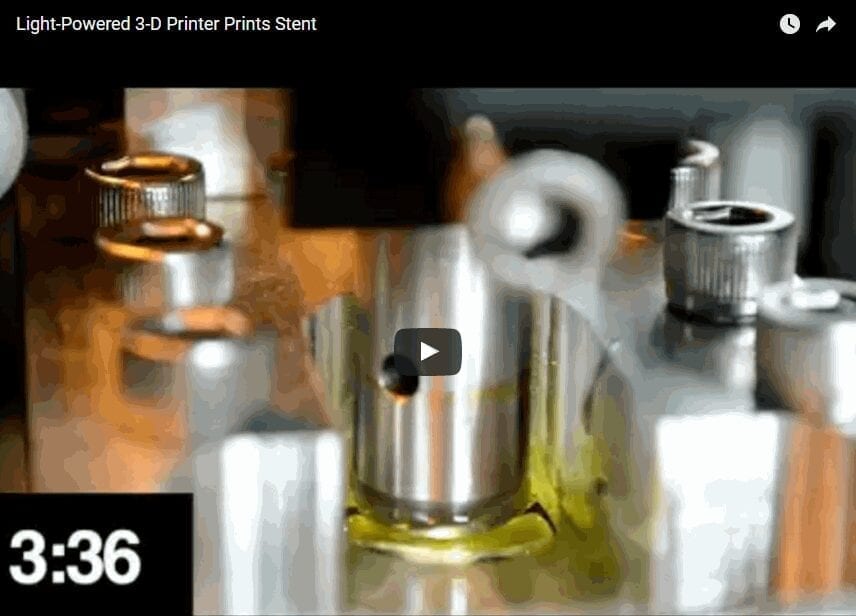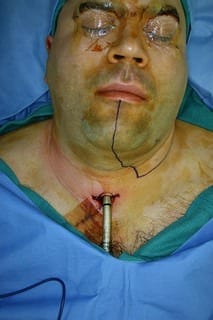
The new lens could be used for biomedical research and security imaging
From visible light to radio waves, most people are familiar with the different sections of the electromagnetic spectrum. But one wavelength is often forgotten, little understood, and, until recently, rarely studied. It’s called terahertz, and it has important applications in imaging and communications.
“Terahertz is somewhat of a gap between microwaves and infrared,” said Northwestern Engineering’s Cheng Sun. “People are trying to fill in this gap because this spectrum carries a lot of information.”
Sun and his team have used metamaterials and 3-D printing to develop a novel lens that works with terahertz frequencies. Not only does it have better imaging capabilities than common lenses, but it opens the door for more advances in the mysterious realm of the terahertz.
Supported by the National Science Foundation, the work was published online on April 22 in the journal Advanced Optical Materials.
“Typical lenses — even fancy ones — have many, many components to counter their intrinsic imperfections,” said Sun, associate professor of mechanical engineering. “Sometimes modern imaging systems stack several lenses to deliver optimal imaging performance, but this is very expensive and complex.”
The focal length of a lens is determined by its curvature and refractive index, which shapes the light as it enters. Without components to counter imperfections, resulting images can be fuzzy or blurred. Sun’s lens, on the other hand, employs a gradient index, which is a refractive index that changes over space to create flawless images without requiring additional corrective components.
There are two major factors that made this new lens possible. First, it is made from a novel metamaterial that exhibits properties not readily available in nature. “Such properties originate from its tiny structures that are much smaller than the terahertz wavelength,” said Fan Zhou, the paper’s first author and member of Sun’s laboratory. “By assembling these tiny structures, we can create specific refractive index distribution.”
Second, the lens was manufactured with a 3-D printing technique called projection micro-stereo-lithography. The technique enables a scalable, rapid, and inexpensive way to produce the tiny features that are needed for the lens to operate at the terahertz frequency band. The printing technology allowed the researchers to fabricate the metamaterial to precisely fit their designs.
“For printing, we use a photo-polymer in liquid form,” Sun said. “When we shine a light on the material, it converts it into a solid. The material forms to the shape of the light, allowing us to create a 3-D structure. You cannot accomplish a gradient index with traditional manufacturing processes.”
The lens could make terahertz imaging, which is particularly useful for security, cheaper, higher resolution, and more available. While X-rays can detect metal, they cannot detect plastic or chemicals. Terahertz scanners, however, can detect both of items to discover concealed weapons, biological weapons such as anthrax, and plastic explosives. And unlike X-rays, terahertz radiation is completely harmless to humans.
“This advance means we can unveil previously inaccessible information of some opaque materials in high resolution,” said Wei Cao, Sun’s collaborator at Oklahoma State University. “This opens up an entirely new technique for a massive range of potential uses from biomedical research to security.”
Learn more: Light-powered 3-D Printer Creates Terahertz Lens
The Latest on: Terahertz imaging
[google_news title=”” keyword=”Terahertz imaging” num_posts=”10″ blurb_length=”0″ show_thumb=”left”]
via Google News
The Latest on: Terahertz imaging
- Global Medical Terahertz Technology Industryon April 26, 2024 at 5:03 am
Global Medical Terahertz Technology Industry is valued at US$ 135.29 Mn in 2022 and is projected to grow at a CAGR of 17.1% By 2032 ...
- Medical Imaging Newson April 25, 2024 at 5:00 pm
AI Makes Retinal Imaging 100 Times Faster, Compared to Manual Method Apr. 10, 2024 — Researchers applied artificial intelligence (AI) to a technique that produces high-resolution images of cells ...
- Imaging Science Bachelor of Science Degreeon April 9, 2024 at 5:00 pm
RIT’s imaging science bs combines physics, math, computer science, and engineering to develop cutting-edge imaging systems for satellites, drones, AR/VR, and more. Imaging science is the study of the ...
- High-performance terahertz modulators induced by substrate field in Te-based all-2D heterojunctionson April 8, 2024 at 12:55 pm
led by Professor Qingli Zhou from Key Laboratory of Terahertz Optoelectronics, Ministry of Education, and Beijing Advanced Innovation Center for Imaging Theory and Technology, Department of ...
- Ultra-broadband tunable terahertz absorber of graphene and hierarchical plasmonic metamaterialson March 31, 2024 at 5:00 pm
However, the design and fabrication of ultra-broadband terahertz MPAs pose considerable challenges. Perfect absorption arises from the strong interaction of valence electrons with light in a ...
- New type of tunable filter reveals the potential for terahertz wireless communicationson March 11, 2024 at 9:05 am
Electromagnetic waves in the terahertz frequency range offer many advantages for communications and advanced applications in scanning and imaging, but realizing their potential poses challenges.
- Terahertz takes to the stageon February 19, 2024 at 3:45 pm
Terahertz imaging makes it possible to image objects that are hidden beneath clothes or inside bags and shoes, for example. This capability is making the technology of great interest for ...
- Revealing hidden defectson February 5, 2024 at 2:41 pm
With new laser sources and detectors coming onto the market, terahertz imaging is starting to become a valuable tool for non-destructive testing, process control and quality inspection ...
- Research Applicationson August 4, 2023 at 12:25 pm
While the procedure is effective, it is also time-consuming, labor-intensive and costly. Terahertz imaging has been shown to offer intrinsic contrast—i.e., no external contrast agent needs to be ...
via Bing News











